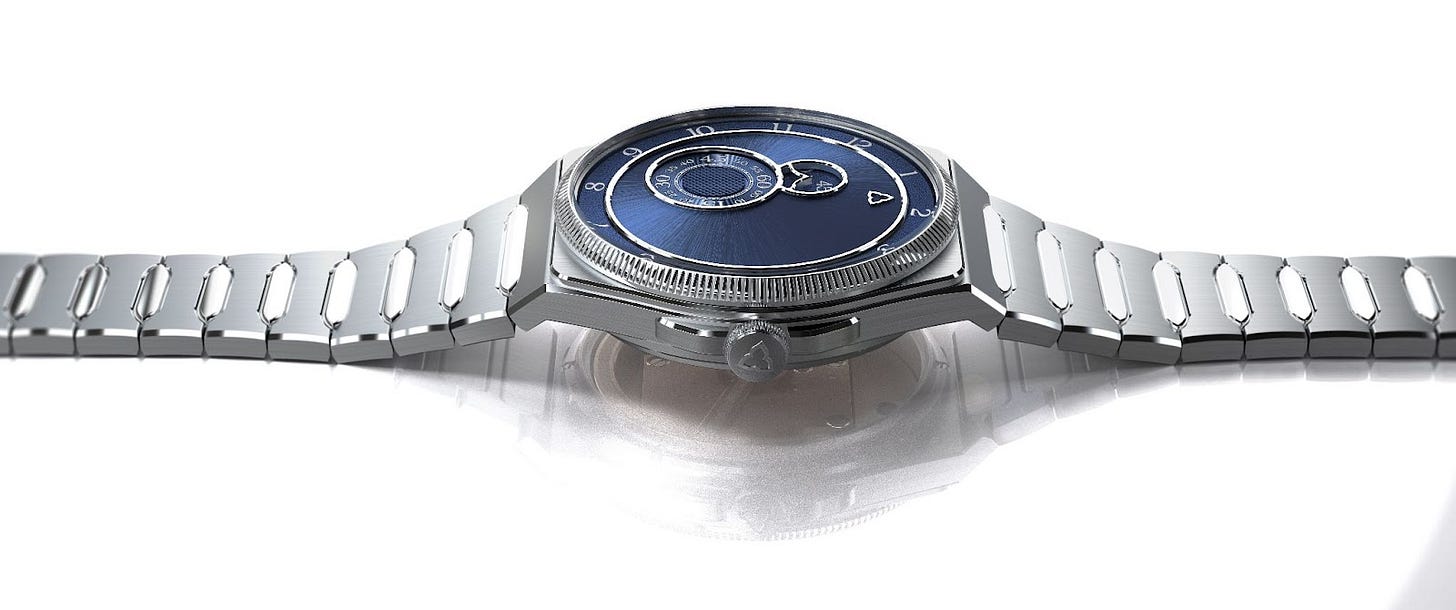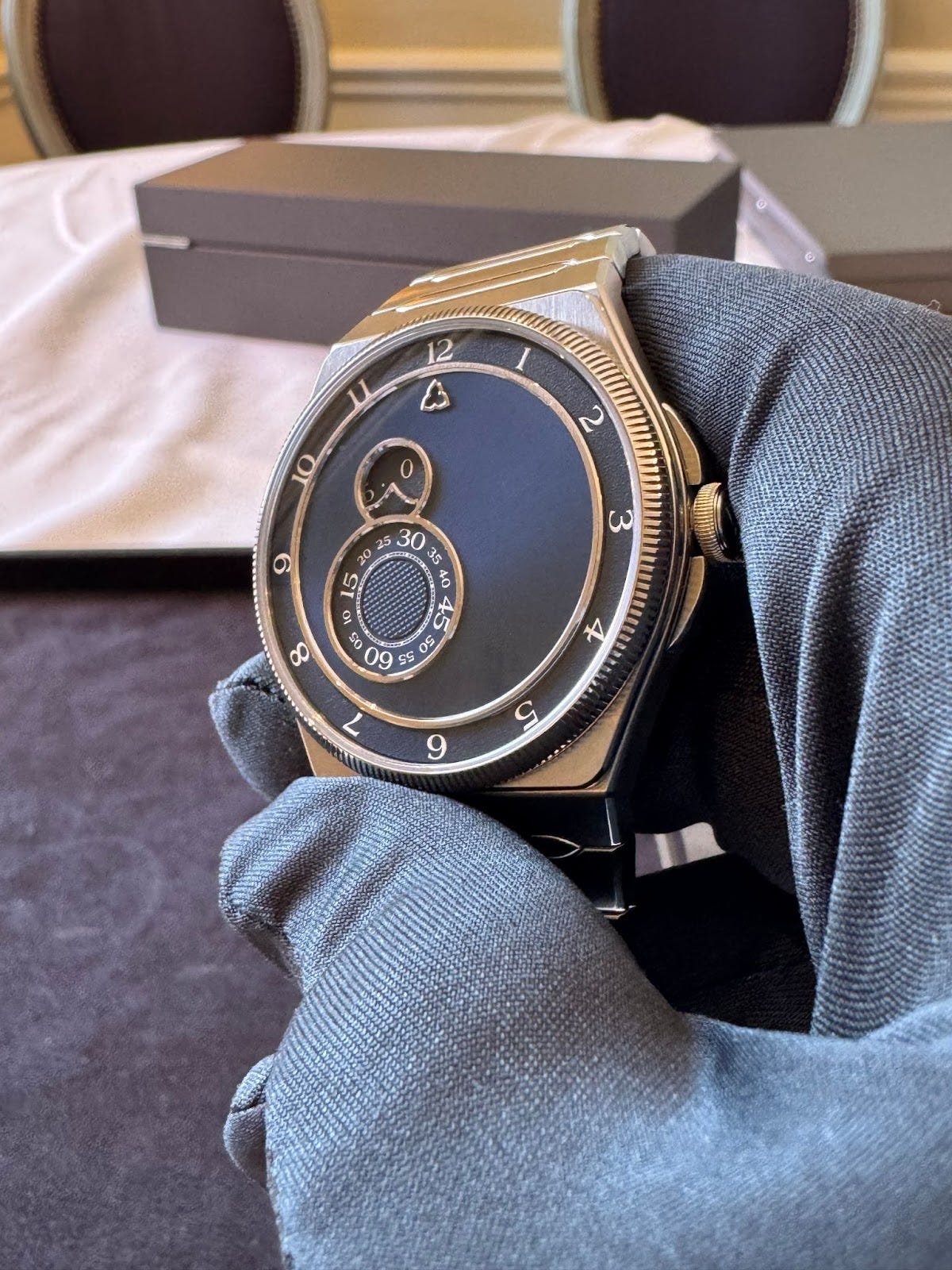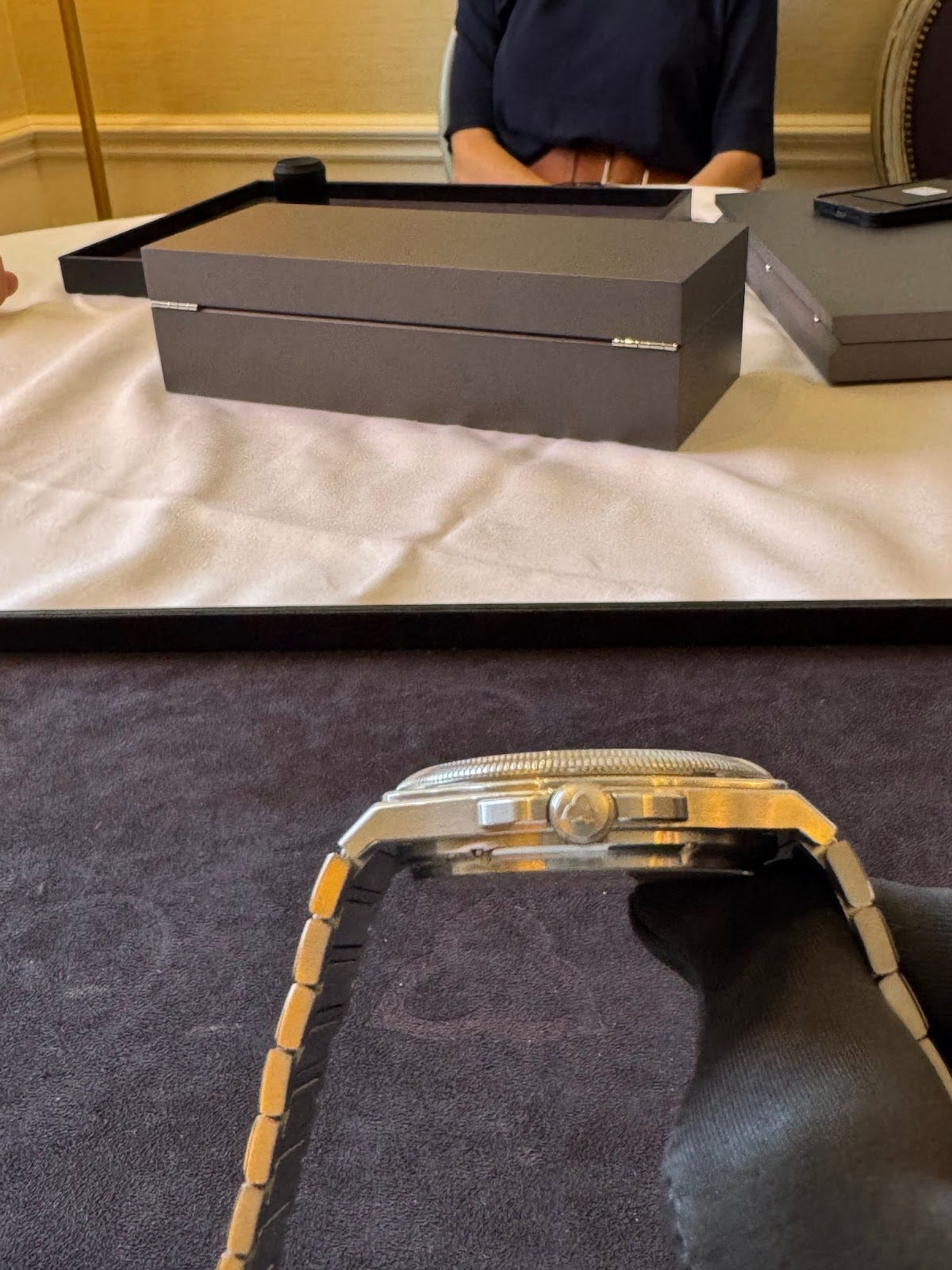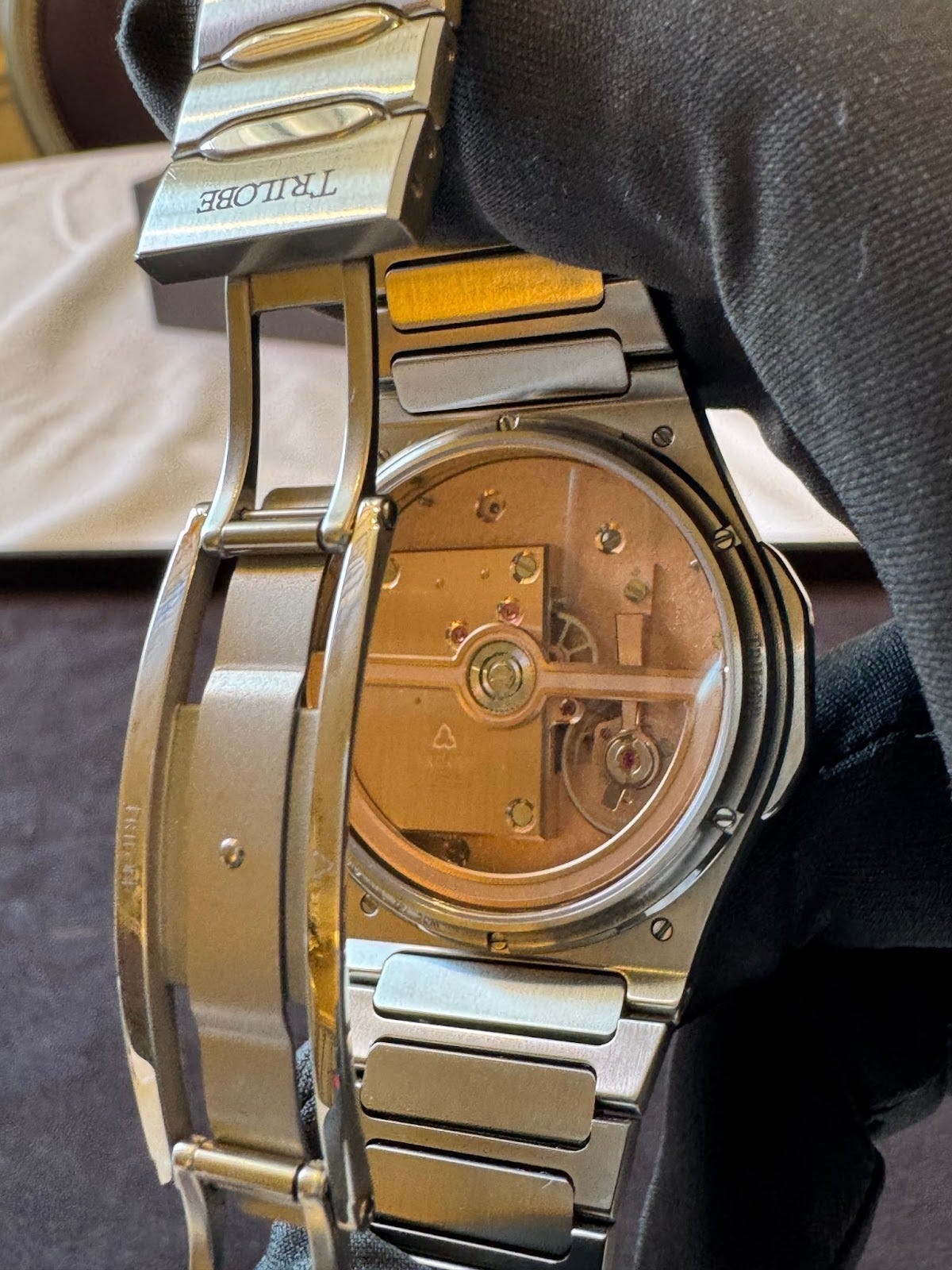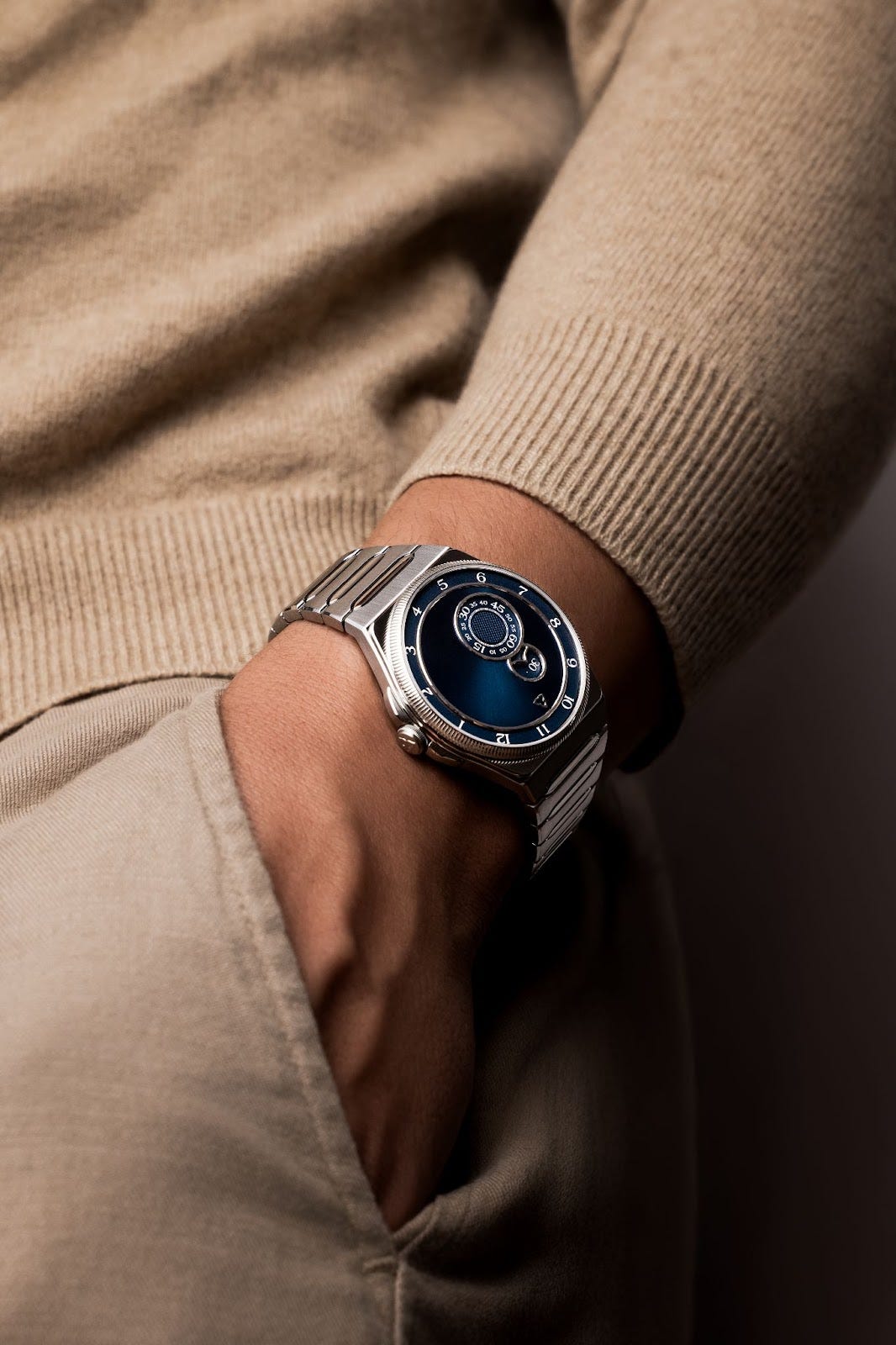Time Unwound: Trilobe’s Trente-Deux Appears
Seven years on, Trilobe unveils its Trente-Deux collection, debuting its first manufacture calibre and a reimagined architecture of time. It is both manifesto and meditation, born in Paris.
The contradiction sits at the heart of Trilobe’s new Trente-Deux: a watch that insists upon independence by whispering through restraint. It emerges from Paris, a city more associated with couture and architecture than the patient craft of calibres, and yet here it announces technical mastery. The paradox is striking—audacity through silence, spectacle through subtraction. Where many brands inflate their launches with epic tales of conquest, Trilobe achieves monumentality by doing less. History shows that such contradictions are the lifeblood of horology. The 1970s elevated tool watches into ornaments of status, and the 1990s reveled in mechanical flourishes when quartz had already eclipsed them. Trilobe now joins this tradition: not revolution through force, but revolution through refusal to imitate. For collectors, this paradox resonates with the wider luxury market, where noise abounds and silence accrues value. The Trente-Deux becomes, in this sense, silence shaped in steel.
The official justification leans on absolutes: the X-Nihilo calibre is “entirely conceived, designed, developed, machined, crafted, decorated, and assembled in Paris.” The rhetoric is deliberate, a cadence of sovereignty. It is the standard claim—that manufacture autonomy guarantees authenticity. Yet reality is more fluid. Even the most powerful houses rely on networks of suppliers and specialized artisans. True independence is rare, and collectors know this. Still, they yearn for the romance of an origin story, for the reassurance of an address and a name. In this case, the claim matters less as technical truth and more as cultural positioning. By declaring Paris, not Geneva or Glashütte, Trilobe asserts a geography of difference. It is independence reframed as the identity of place.
Watches are never only cases and calibres—they are rituals. In the Trente-Deux, ritual finds form in the bracelet. Its tapering satin-brushed links echo the trilobe motif, each interlink polished to a mirror finish. A double folding clasp opens seamlessly, its mechanics hidden, yielding only to the pressure of touch. These details are not incidental; they are where ownership becomes intimate. Collectors often speak of weight, feel, resistance, the hidden knowledge of clasps and crowns. Trilobe taps into this culture of tactile poetry, where fastening a watch each morning becomes an act of quiet belonging. In the Japanese idea of shibui—restraint rewarding repetition—one finds a useful analogue: grace discovered not at first glance, but in the steady rhythm of daily use.
Marketing frames the Trente-Deux as “a new steel signature,” robust, versatile, resistant. It suggests a companion for work and leisure, water-tested and ready for daily life. The human reality is quieter. Most owners will never test its seals in the sea. The Clous de Paris guilloché on its seconds wheel will shimmer beneath office lights, not Mediterranean sun. Steel will brush against wool and cotton more than stone or salt. Yet this divergence is not failure—it is the poetry of watch ownership itself. Marketing imagines adventure; collectors seek contemplation. The gap between claim and practice is where meaning accumulates.
The mythology Trilobe cultivates is Parisian defiance: that fine watchmaking can exist outside the Alps, that architecture of time can be redrawn. This mythology, grand as it is, finds grounding in craft. The X-Nihilo calibre reveals bridges with satin textures, black-polished screws, and a balance wheel suspended in a sculptural void. Its oscillating tungsten weight frames the balance like a stage. Such work is genuine and ambitious, particularly for a young independent. Compared to peers who outsource heavily in their early years, Trilobe’s determination to root its narrative in a true manufacture calibre is noteworthy. The story may be embellished, but the metal holds truth.
The Trente-Deux claims intuitive function: rotating rings that tell hours, minutes, and seconds in harmony. To read it, however, requires adjustment, a shift of perception. Functionally it is not easier—it is different. And therein lies its appeal. Collectors do not seek efficiency; they seek distinction. To own a Trilobe is to read time sideways, to live with a dial that refuses centrality. The claimed function is a new clarity, but the psychological need it serves is recognition. It marks the wearer as one who values divergence. Luxury often hides psychological hunger beneath the cloak of practicality, and here the cloak is thin. The rings are not about legibility but about identity.
Precision and absurdity co-exist within every watch, and the Trente-Deux embraces this. Screws polished to mirror finish, unseen by most eyes. A balance regulated to chronometric standards in a world ruled by atomic clocks. The very act of finishing components invisible to the owner is absurd, yet it is precisely this devotion that collectors prize. Trilobe magnifies the paradox, placing its balance wheel in an island of open space, reflected within a mirrored caseback until it appears to float. It is both unnecessary and indispensable, at once theatrical and serene.
To understand this release, one must also consider its contemporary context. The 2020s have seen consolidation on one side—group-owned brands leaning on safe reissues—and experimentation on the other, with independents crafting new visual languages. Trilobe belongs firmly in the second camp. Alongside peers like MB&F or De Bethune, it insists that identity matters as much as heritage. But unlike those cosmic or baroque visions, Trilobe speaks with architectural minimalism and a Parisian accent. It highlights a growing cultural desire for objects of difference—pieces that resist the algorithmic uniformity of modern consumption. Independence, here, is not isolation but a singular voice. The Trente-Deux is both watch and statement: a manifesto for a brand maturing into selfhood.
Author’s Opinion
The Trente-Deux is not without its imperfections. The rhetoric of absolute independence glosses over the collaborative reality of modern watchmaking. Its off-center display demands a patience not all wearers will give. Traditionalists may find its language too architectural, too deliberate in its divergence. Yet it stands as one of the rare independent releases that achieves coherence. Every gesture, from the clasp to the calibre, aligns with a vision that is neither derivative nor indulgent. My verdict: for collectors who long for quiet distinction in an era of loudness, the Trente-Deux resonates. My reflection: independence in horology today is less about separation than about creating small islands of meaning, where time can be read differently, and silence holds its own authority.



